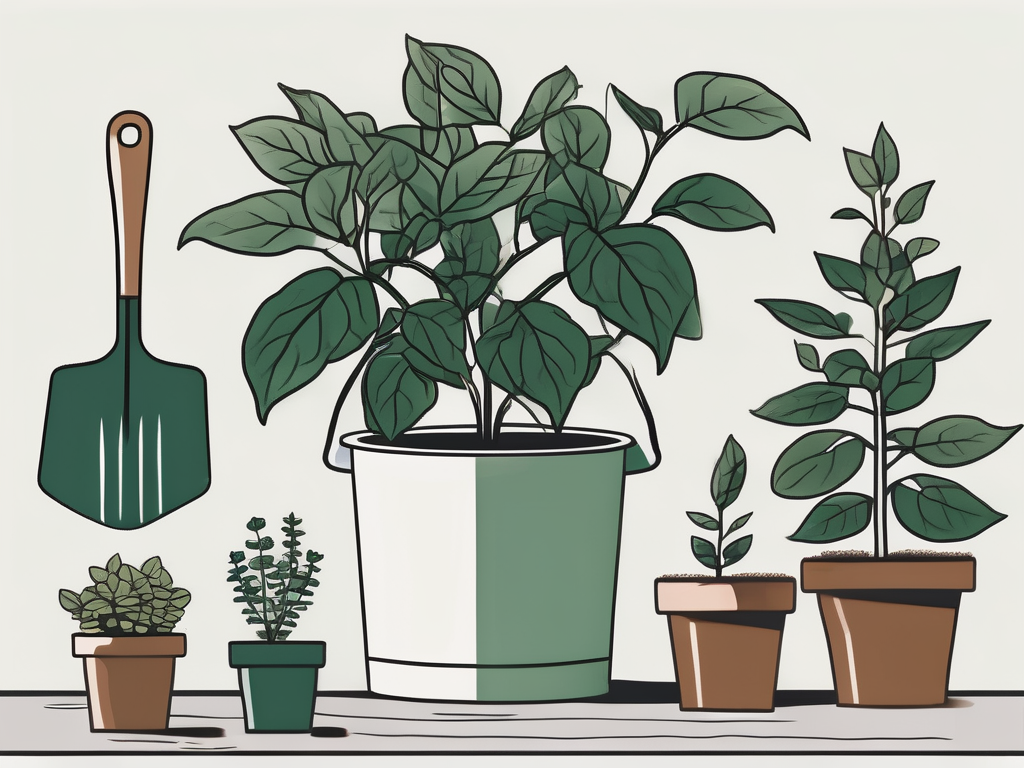
If you're looking to add a bit of green to your space without the mess of soil, air plants might just be your new best friend. These fascinating little plants, also known as Tillandsias, are unique in their ability to thrive without being potted in soil. They absorb moisture and nutrients through their leaves, making them a versatile choice for indoor decor.
In this guide, we'll explore the various types of air plants, their care requirements, and how to incorporate them into your home decor. Whether you're a seasoned plant parent or just starting your plant journey, there's something here for everyone. Let's get started!
Understanding Air Plants
Air plants belong to the Bromeliad family, which is a diverse group of plants that also includes pineapples. Unlike many other plants, air plants don't need soil to grow. Instead, they absorb water and nutrients through their leaves. This makes them incredibly versatile, allowing you to place them in all sorts of creative ways around your home.
Their natural habitat is in the forests, mountains, and deserts of Central and South America, where they often grow on other plants or objects. This epiphytic growth habit allows them to thrive in a variety of conditions, from humid rainforests to arid deserts.
Air plants are incredibly adaptable, but they do have some specific needs. Understanding these will help you keep your air plants healthy and thriving. Let's take a closer look at the different types of air plants and their unique characteristics.
Popular Types of Air Plants
There are over 600 known species of air plants, each with its own unique look and care requirements. Here are some of the most popular types that you might come across:
- Tillandsia ionantha: This is one of the most popular air plants, known for its vibrant color changes. It starts off green and turns bright red or pink when it's about to bloom.
- Tillandsia xerographica: Known as the "King of Air Plants," this one is large and has a stunning rosette shape with silvery leaves. It's a slow grower but well worth the wait.
- Tillandsia caput-medusae: With its unique shape resembling Medusa's head, this air plant is a conversation starter. It has curly leaves and is quite hardy.
- Tillandsia tectorum: This fuzzy air plant is covered in tiny trichomes, giving it a white, fuzzy appearance. It's native to Peru and Ecuador and prefers bright light.
- Tillandsia bulbosa: This one has a bulbous base and long, twisting leaves. It thrives in humid environments and is quite striking in appearance.
Each of these air plants has its own charm and care needs. Next, we'll dive into how to care for these unique plants.
Caring for Your Air Plants
One of the most appealing aspects of air plants is their low-maintenance nature. However, they do have specific requirements that need to be met to keep them healthy. Here are the basics:
Watering
Air plants need water to survive, but they don't like to be constantly wet. The best way to water them is to soak them in a bowl of water for about 20-30 minutes once a week. After soaking, shake off any excess water and let them dry completely before putting them back in their spot. In drier climates, you might need to water them more often, while in humid areas, less frequent watering is needed.
Light
These plants prefer bright, indirect light. Direct sunlight can damage their leaves, so it's best to place them near a window where they get plenty of light but not direct rays. If natural light is limited, you can supplement with fluorescent lighting.
Air Circulation
As their name suggests, air plants need good air circulation to thrive. Make sure they're placed in an area where air can move freely around them. Avoid putting them in closed containers with no airflow.
Temperature
Air plants are quite adaptable when it comes to temperature. They thrive in a range between 50°F to 90°F (10°C to 32°C). Avoid exposing them to extreme cold or heat, which can be damaging.
With these basics covered, your air plants should thrive and bring a touch of nature to your home.
Creative Ways to Display Air Plants
One of the best things about air plants is their versatility in display. You can place them just about anywhere, and they don't require a pot or soil. Here are some creative ideas for showcasing your air plants:
- Hanging Terrariums: Use glass globes or terrariums to hang air plants in your home. This not only displays them beautifully but also allows light to reach all sides of the plant.
- Driftwood Displays: Attach air plants to pieces of driftwood for a natural, rustic look. This works well for coastal-themed decor.
- Wall Art: Create a living wall by mounting air plants onto a wooden frame or wire grid. This can become a stunning piece of art.
- Geometric Holders: Use geometric metal or wire holders to display air plants. These give a modern touch and allow the plants to be the focal point.
- Shells and Stones: Place air plants in seashells or on stones for a natural and minimalist look.
These ideas are just the tip of the iceberg. The only limit is your imagination!
Common Mistakes and How to Avoid Them
Even though air plants are relatively easy to care for, there are some common mistakes that plant lovers might make. Here are a few to watch out for:
Overwatering
One of the most common issues is overwatering. Remember, air plants don't like to be constantly wet. Ensure they're allowed to dry out completely between waterings to prevent rot.
Insufficient Lighting
Air plants need plenty of light. If you notice your plants looking dull or not growing, they might not be getting enough light. Consider moving them closer to a light source.
Poor Air Circulation
As mentioned earlier, good air circulation is crucial. Avoid placing air plants in enclosed containers without airflow, as this can lead to mold and rot.
Ignoring Fertilization
While air plants can survive without fertilizer, they thrive when given a little extra nutrition. Use a water-soluble fertilizer specifically designed for bromeliads every month or so.
By keeping these tips in mind, you can prevent common pitfalls and ensure your air plants stay vibrant and healthy.
Propagating Air Plants
Interested in expanding your collection without buying more plants? Air plants can be propagated, which is a fun and rewarding process. Here's how:
Identifying Pups
After an air plant blooms, it starts to produce "pups," or baby plants, at its base. These can be left to grow on the mother plant or separated once they've reached about one-third the size of the parent plant.
Separating Pups
To separate the pups, gently pull them away from the mother plant. If they're not coming off easily, you can use a clean, sharp knife to cut them away carefully.
Growing Pups
Once separated, care for the pups just like you would a mature air plant. Be patient, as it can take some time for them to grow to full size.
Propagation is a great way to expand your collection and share plants with friends and family.
Choosing the Right Air Plant for Your Space
With so many varieties to choose from, finding the right air plant for your space can be exciting. Here are some factors to consider:
Light Availability
Consider how much natural light your space receives. If you have a bright spot, you might choose a plant like Tillandsia tectorum, which loves bright light. For spaces with less light, consider Tillandsia brachycaulos, which can tolerate lower light conditions.
Humidity Levels
Think about the humidity in your home. If you live in a dry area, you might opt for a species that can handle lower humidity, like Tillandsia xerographica. In more humid areas, most air plants will thrive.
Decor Style
Match your air plant to your decor style. For a modern look, choose a plant with sleek, simple lines. For a rustic or bohemian vibe, consider a plant with a more wild and natural appearance.
By taking these factors into account, you can find the perfect air plant to complement your home.
Fun Facts About Air Plants
Air plants are full of surprises! Here are some fun facts you might not know:
- Color Changes: Many air plants change color when they're about to bloom, adding a pop of color to your collection.
- Epiphytes: Air plants are epiphytes, meaning they grow on other plants without harming them.
- Survivors: These plants can survive a range of conditions, from humid rainforests to arid deserts.
- Cleaning the Air: Like many houseplants, air plants help clean the air by absorbing pollutants.
- Unique Appearance: Each species has its own unique look, from curly leaves to fuzzy trichomes.
These fascinating aspects make air plants a wonderful addition to any plant collection.
Integrating Air Plants into Interior Design
Air plants are not just plants; they're a design element. Their unique appearance and versatility make them perfect for adding a touch of nature to any space. Here's how you can incorporate them into your interior design:
Accent Pieces
Use air plants as accent pieces in your decor. Place them on shelves, tables, or mantels to add a bit of greenery without overwhelming the space.
Vertical Gardens
Consider creating a vertical garden with air plants. This can be done using a variety of materials, from wooden frames to metal grids, and can make a stunning statement piece.
Complimentary Decor
Pair air plants with other decor items. Use them to complement books, sculptures, or other decorative objects. Their unique forms and textures can enhance the overall aesthetic.
With their versatility, air plants can easily fit into any design scheme, adding life and interest to your home.
Final Thoughts
Air plants offer a unique and low-maintenance way to bring greenery into your home. From their diverse range of species to their versatile display options, they provide endless possibilities for plant lovers. With proper care and a little creativity, these fascinating plants can thrive and enhance your living space.
At Cafe Planta, we're here to help you on your plant journey. We offer a variety of houseplants, plant care accessories, and even plant-themed apparel. If you have any questions about your plants, feel free to email us or send us a message on Instagram. We believe in the power of plants to connect us with nature and each other, and we're excited to help you build a beautiful, thriving plant collection at home.












